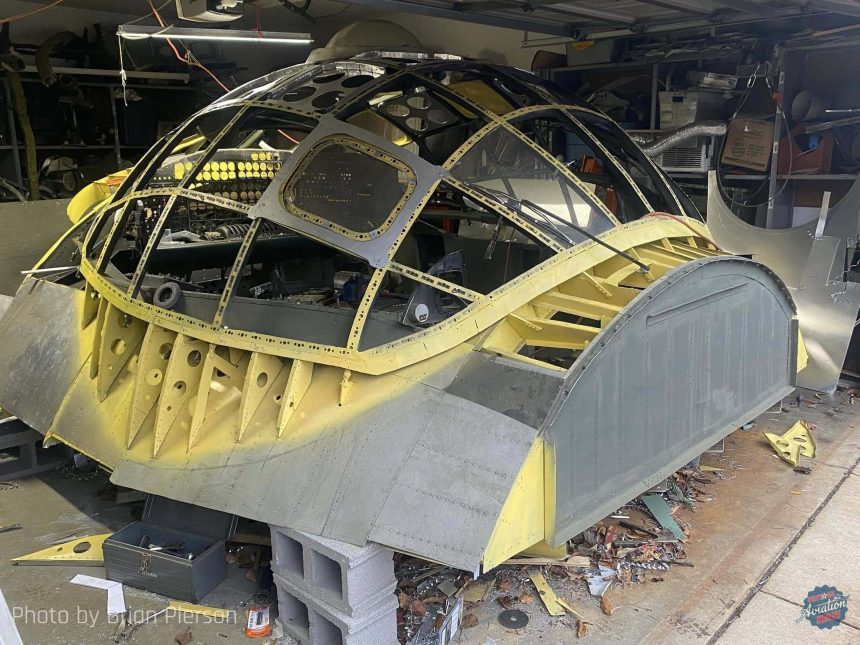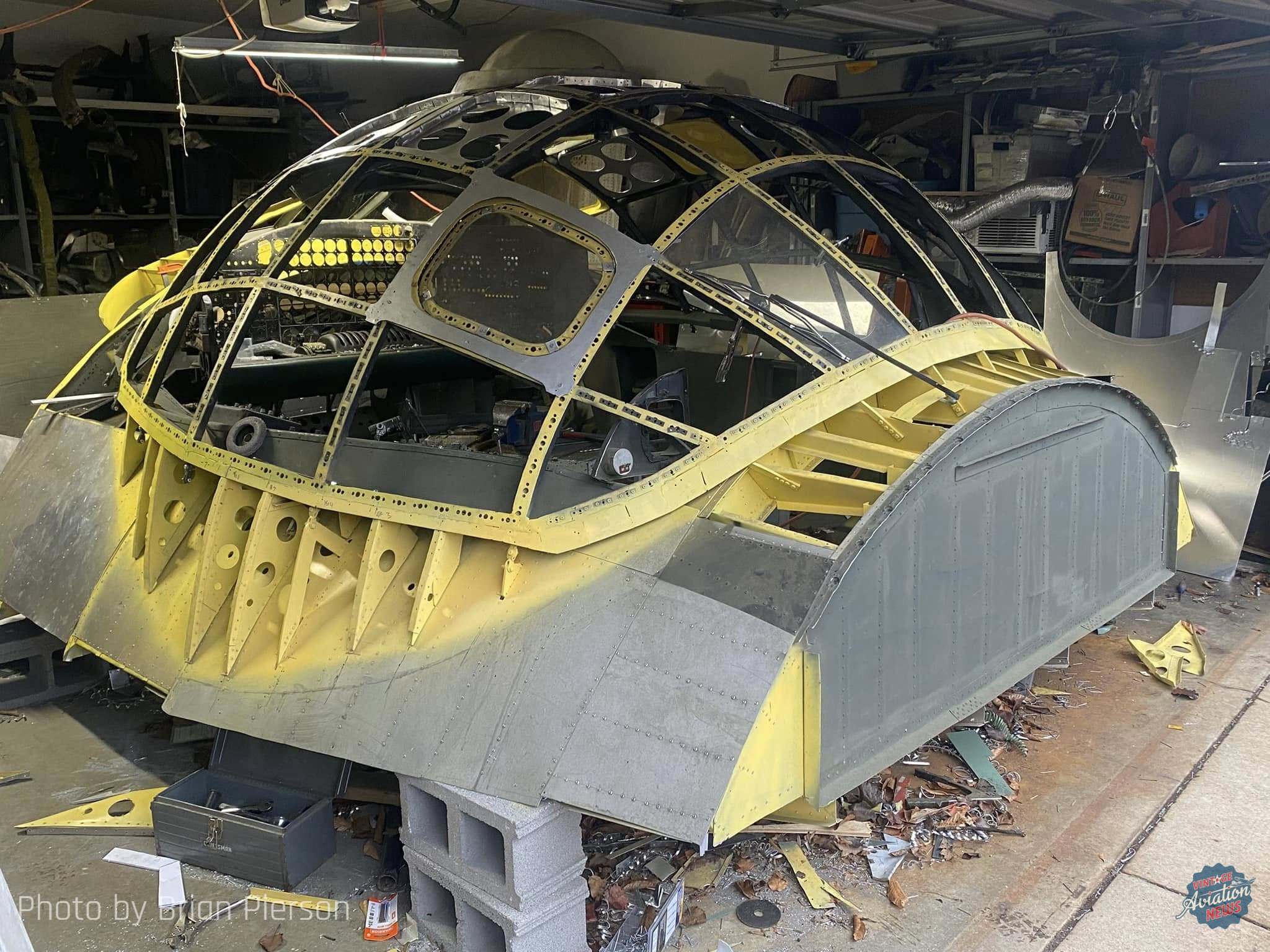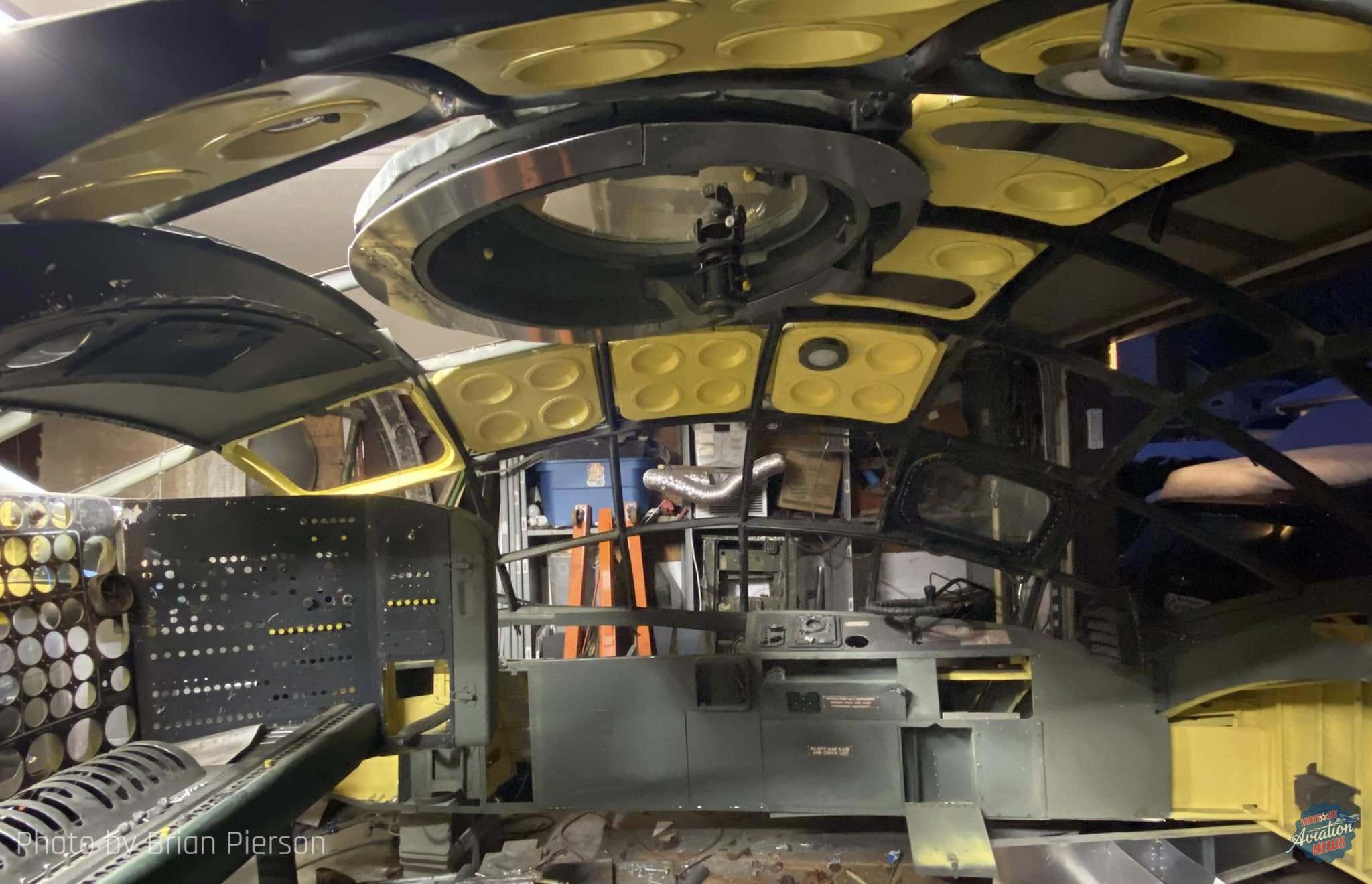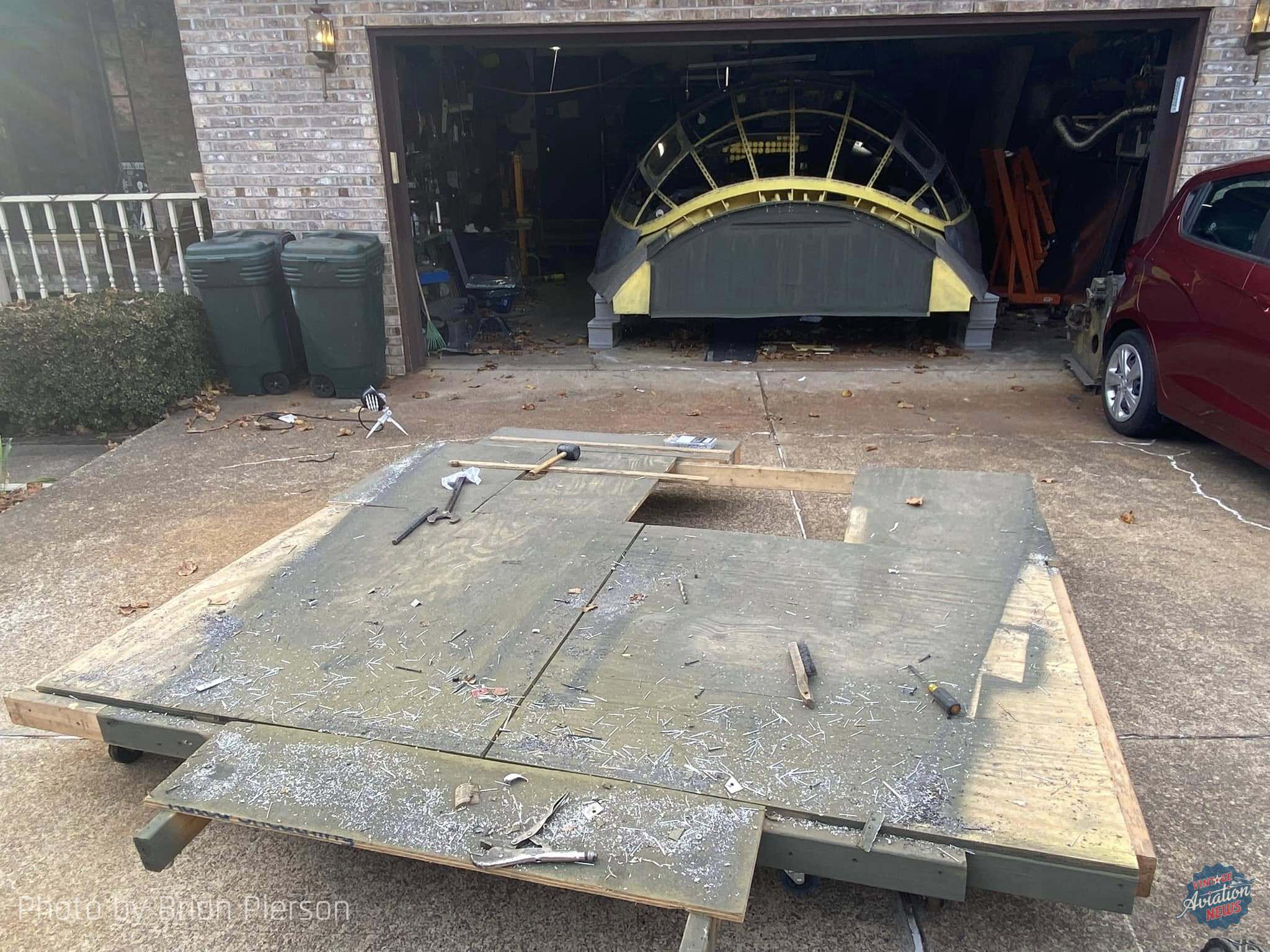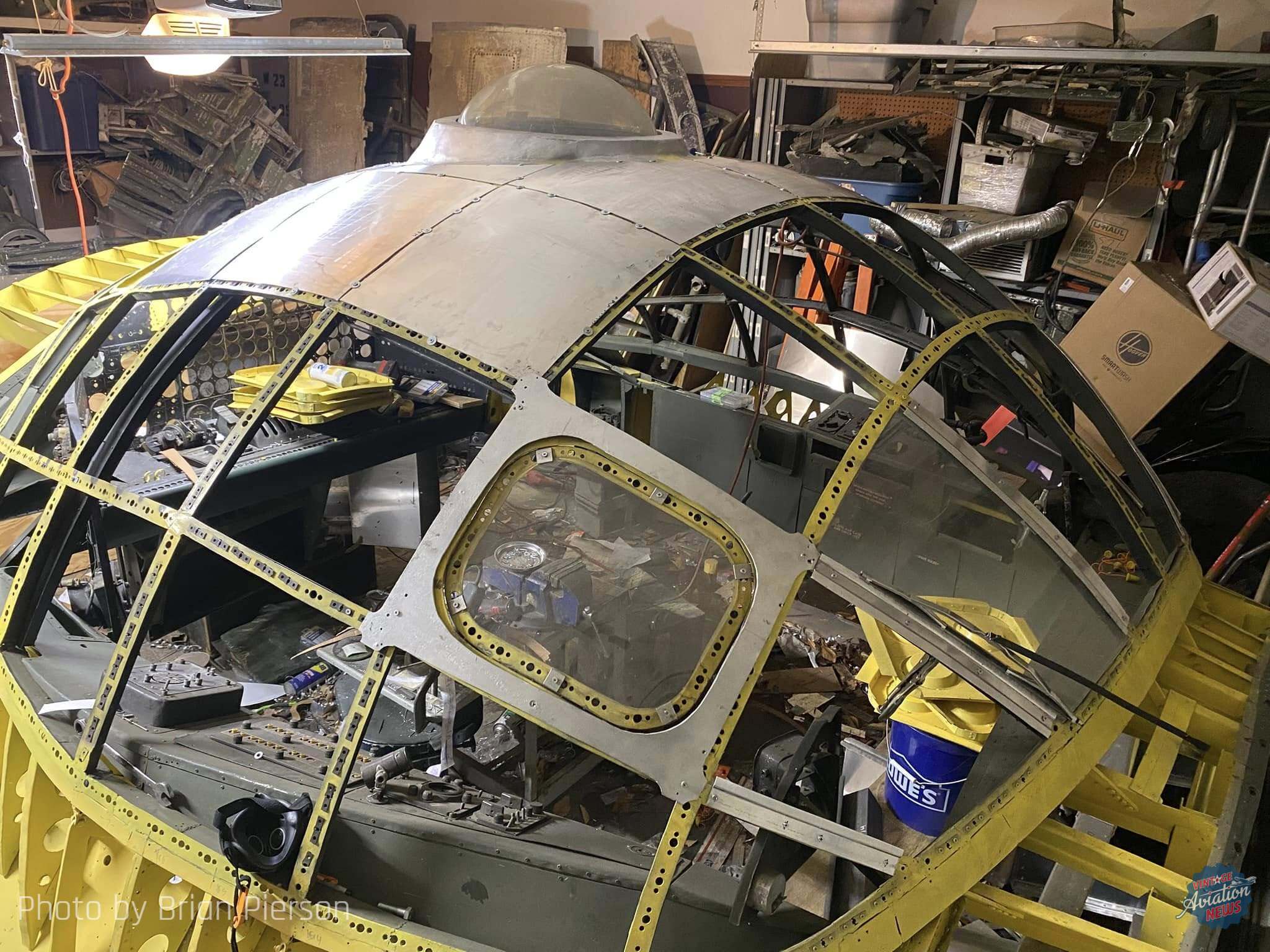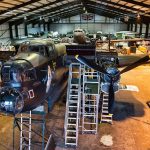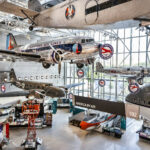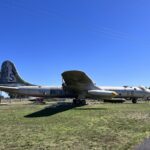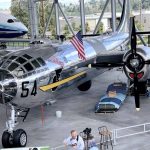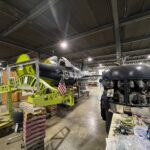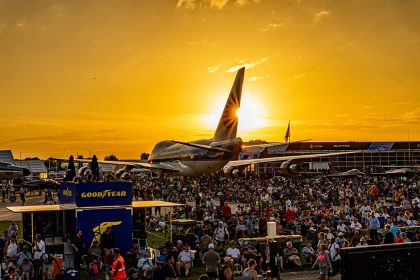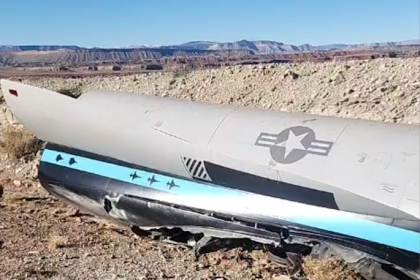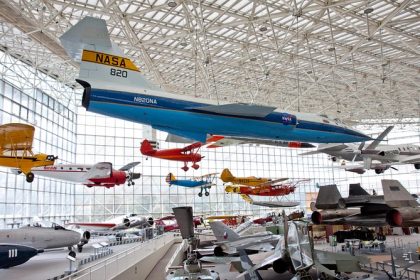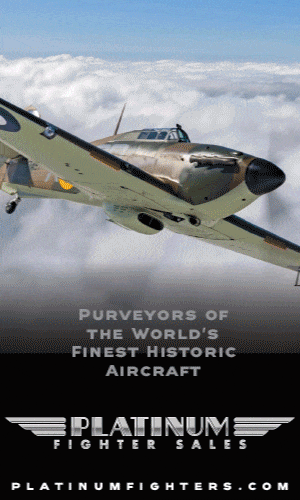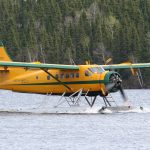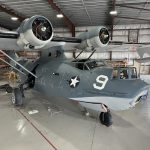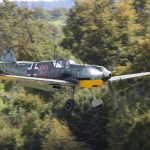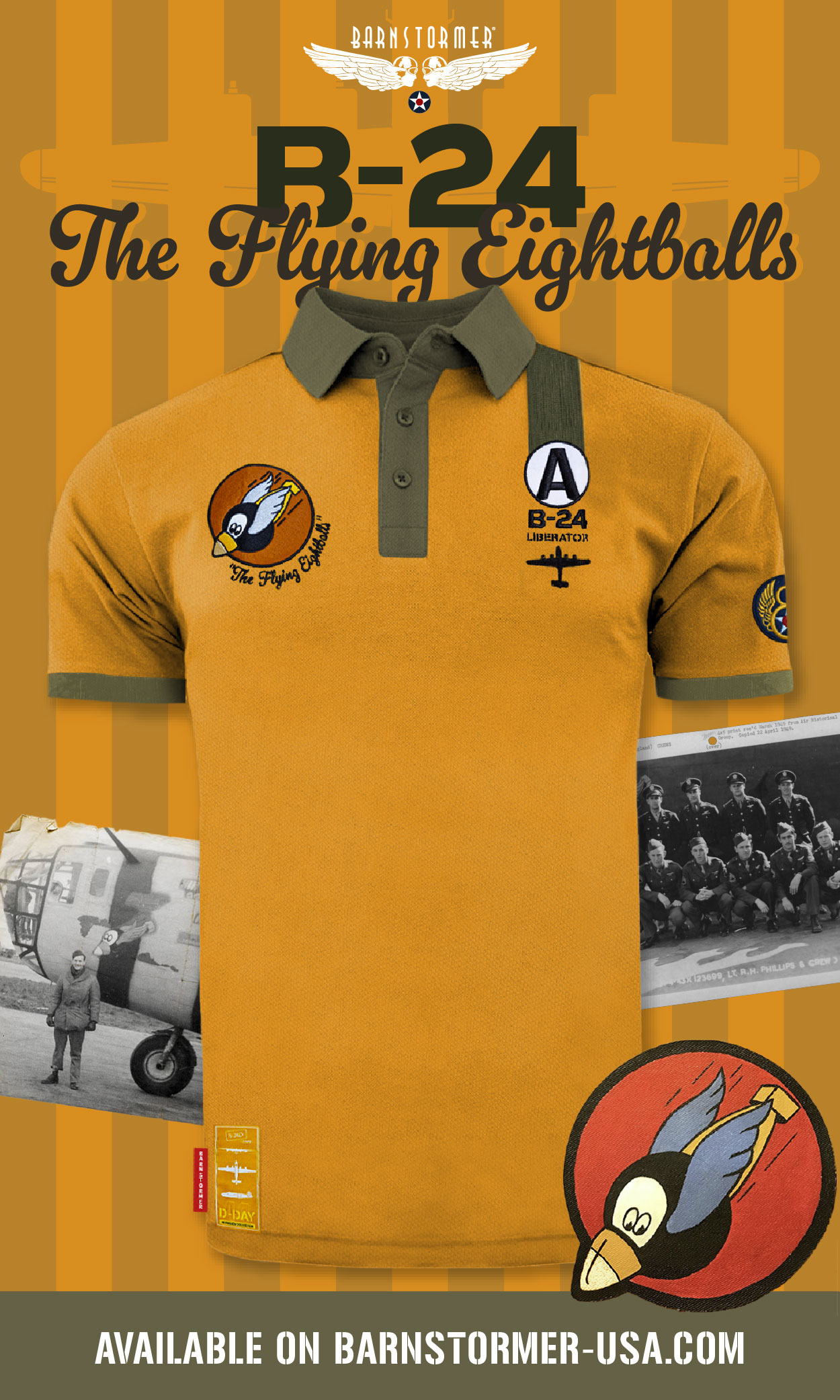“The journey of a thousand miles begins with a single step.” Originally a Chinese proverb, this is a quote that many people in the historic aircraft community can associate with. No project is too lofty. As the great Gerry Beck liked to say, “The impossible just takes a little longer.” Mr. Beck was referencing the effort to build his P-51A Mustang from the ground-up, using the original blueprints. Building a WWII fighter from essentially nothing is a feat all its own. What if I were to tell you that someone is doing the very same thing, only for a B-36 Peacemaker? Crazy? Yes. Lofty? Yes. Impossible? No. At least, that’s the way Brian Pierson sees it.
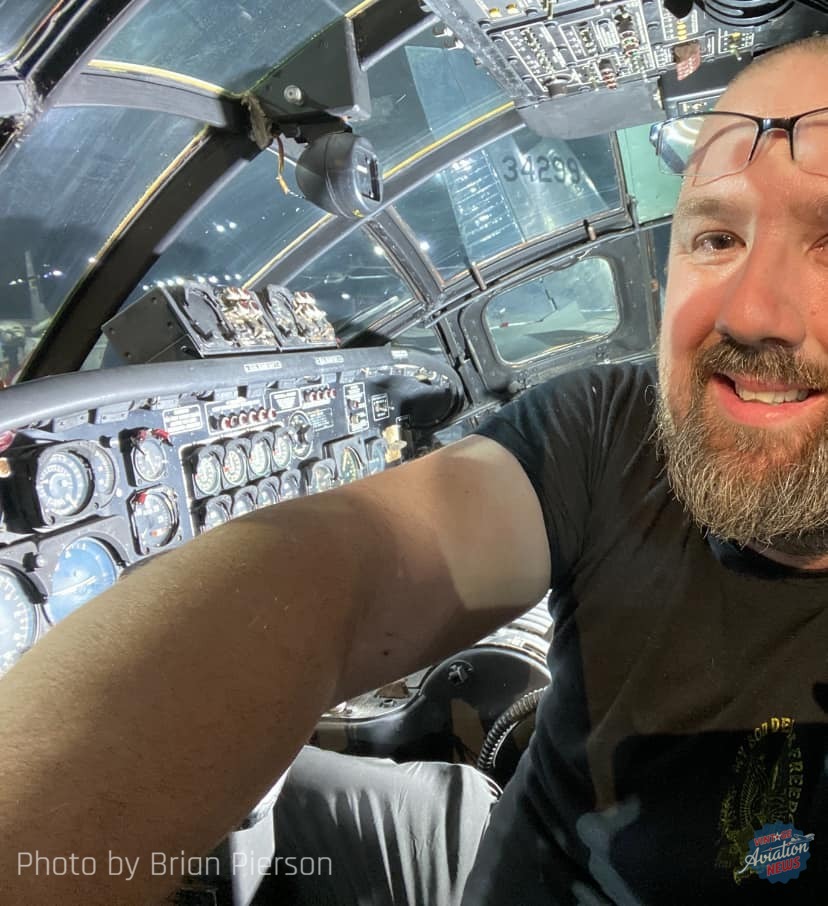
Brian grew up being exposed to aviation, like so many of us warplane aficionados. Growing up, his father built RC models. On the weekends, they were usually attending some form of air or car show, or plane-spotting at the local airfield in Central Ohio. Brian described his early childhood exposure to warplanes as “watching WWII aircraft films in dark, smoke filled rooms full of middle-aged men.” Painting a picture that many of that generation can associate with, Brian’s “mild obsession” with the B-36 Peacemaker would soon begin. In 1983, at the age of 5, he and his father took a trip to the National Museum of the United States Air Force, in Dayton, Ohio. In one of the display hangars, they came upon the Aluminum Overcast. Brian’s father told him that he used to see the B-36s fly over often during his childhood. Awe struck by the size and sheer power of the Strategic Bomber, Brian’s fascination was reinforced by an article he read shortly after the museum visit. His father shared a publication that highlighted Walter Soplata’s B-36, and Brian became inspired.
At a house in a small suburban town in West Virginia, “strange things are afoot.” Brian has no formal training in fabrication, he is entirely self-taught. By looking at his work so far, you would think he was born with sheet metal tools in his hands. This humble B-36 builder’s work history includes warehouses and truck driving. In 1998, he began collecting militaria, and found an interest in restoring what he was amassing. Brian began reselling antiques on eBay and at local antique malls in 2016. In 2020, when the pandemic rolled around, he and his wife took to caring for sick family members. Brian’s reselling business slowed down, and with lots of time being stuck at home, he did the one thing any logical Cold War aircraft enthusiast would do, begin building a B-36. Since 2020, Brian has been toiling in his garage, building the cockpit of a B-36H.
The B-36 Peacemaker design process can be traced back to April of 1941. The United States needed a long-range bomber to fly to Europe and back, and also from Hawaii to Japan and back. Built by Consolidated Vultee Aircraft Corporation (later Convair), the aircraft became known as Aluminum Overcast, due to its overpowering size. This Strategic Bomber was first flown in August of 1946. The Peacemaker was the only American aircraft with the range and payload to carry atomic bombs from American soil to the USSR. With a top speed of 435 miles per hour, the B-36 could fly up to 50,000 feet and had a range of 12,000 miles. This bomber was often referred to as having “six turning, four burning,” in reference to the aircraft’s power-plants. The B-36 had six Pratt & Whitney R-4360 Wasp Major radial engines (“turning”) and four General Electric J47 turbojet engines (“burning.”) For armament, the Aluminum Overcast was equipped with one remotely operated tail turret with two 20mm M24A1 autocannons. The aircraft could carry 72,000-86,000 pounds of bombs, depending on aircraft configuration. To summarize, the B-36 Peacemaker was a beast. Only four fully intact examples exists today, in museums across the United States. None of them fly.
Brian began his B-36H after an inspiring trip to the Strategic Air Command Museum, which houses B-36J 52-2217A. Shortly after his visit, Brian collected a decommissioned highway sign and proceeded to turn it into a B-36 instrument panel (coupled with instruments he had previously bought off of eBay.) After this panel was completed, Brian progressed to constructing the center console, which is necessary to support the instruments panel itself. From here, the project took off. Brian is focused on building his B-36 as an H model, as the H is not as well-represented as other variants (such as the J.) He is all about showing the lesser known variants of the Peacemaker and their features. This skilled craftsman has been building this Strategic Bomber replica “pretty much full-time,” while selling collectables and caring for family. In four years time, Brian has easily spent over 10,000 hours on the project.
This garage-built B-36H is not intended to be airworthy, that is, unless major funding and resources become available. Despite the fact that the aircraft may not fly, Brian has still taken painstaking attention to detail. He’s taken measurements of the Soplata B-36 flight deck, and used pictures, books, and data from SAC museum to shape his Peacemaker into what it is today. The cockpit canopy, structure, sides, and base are all complete, or nearly so. Brian is currently covering the cockpit section in aluminum and plexiglass, to complete the signature B-36 ‘greenhouse’ look. The control columns, yokes, and linkages will soon follow.
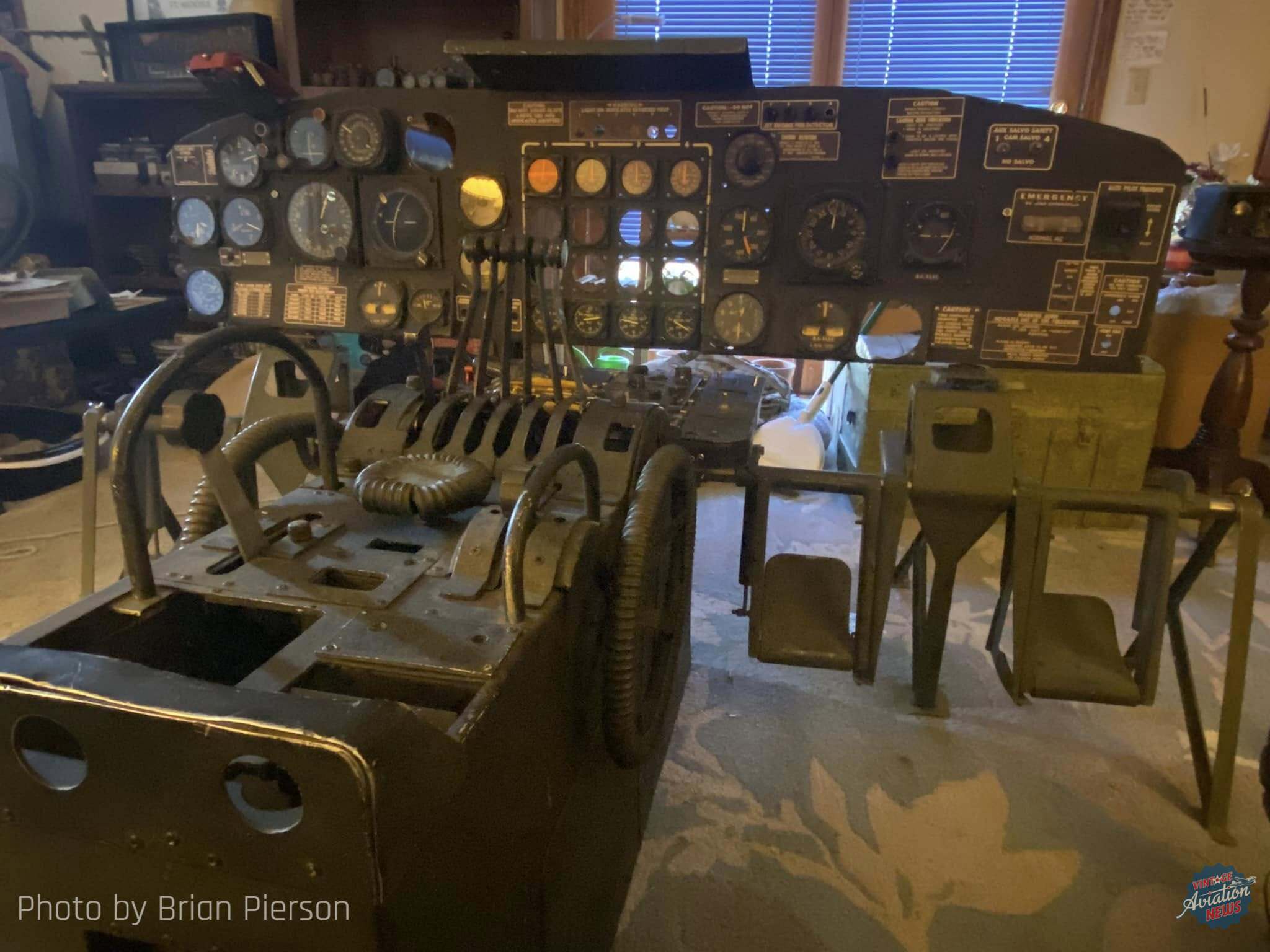
How far will he go? Brian has said that he wants to build from the nose to the turret bay, but “who knows?” Brian doesn’t plan on stopping with just one aircraft, he’d also like to fabricate an XB-36, and after that, a B-32. Next, “in no particular order,” the XB-15 and XB-19 (all aircraft that no longer exist.) This Peacemaker enthusiast wants to have these replicas out in the public, so people can learn from these rare “little known” aircraft that played such a big part in the Cold War. Brian’s work is nothing short of remarkable, and extremely admirable. The Last B-36 project serves as an inspiration for yours truly, on the P-51 ‘Lucy Gal’ project. Brian is showing us all that anything is possible if you set your mind to it, dream big, and don’t quit (or get bogged down by those who don’t believe.) Thank you, Brian, for all you are doing to keep aviation history alive.

To learn more about the B-36 Project, be sure to join the B-36 Interest Group on Facebook and Brian’s Facebook page for the project – Building the last B-36. You can also subscribe to Brian’s YouTube Channel Building the Last B-36 to see video updates of the project. To support and donate to this project, visit the GoFundMe page “Help build B-36H Peacemaker 50-1083.”







